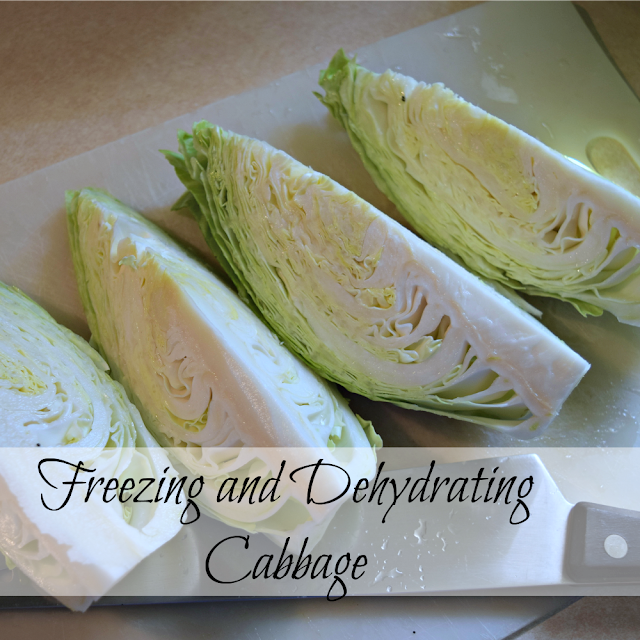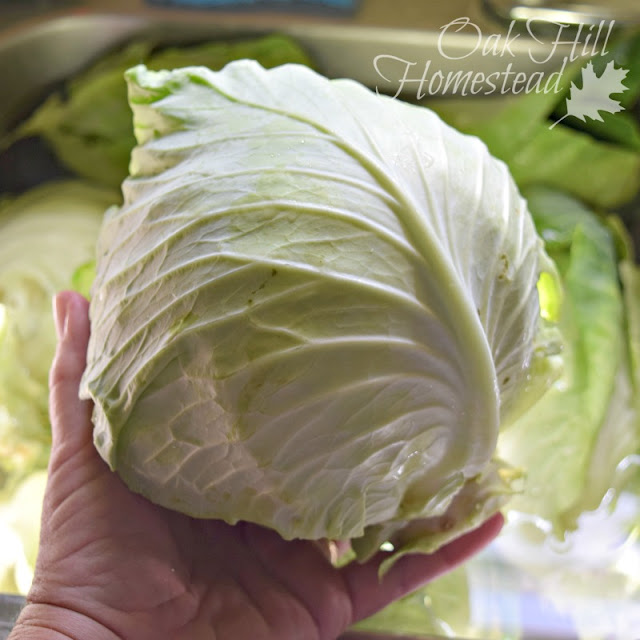When the weather gets hot, cool weather plants "bolt".
This post contains affiliate links. Please see my disclosure page.
I planted my cabbage a bit late this spring. I pulled the best three plants and used them first, letting the others stay in the ground a little longer. But summer has hit in earnest now and the remaining cabbages were beginning to form elongated heads instead of round ones. I knew they were beginning to bolt and it was time to pick them all. If I left them, a stem would have grown up through the head which would eventually flower and then form seeds.
The head of cabbage above is a nice and round. The one below was the worst of the bunch; obviously I should have harvested some of these at least a week earlier than I did. I ended up cutting off the bottom of this one and its matching half, and shredding them to dehydrate.
After pulling off all the outer leaves, I soaked the heads in a sink of salt water for awhile in case there were any critters, but fortunately I didn't find any. All those outer leaves went on my compost pile.
My plan was to freeze most of the cabbage and dehydrate a head or two as well.
Freezing cabbage
To freeze cabbage, leave the core intact and cut the head into quarters. The core helps hold the leaves in place. Then blanch the quarters.
To blanch, bring a pot of water to a boil and add several quarters of cabbage. Continue boiling for three minutes, then remove the cabbage to a bowl of ice water to stop the cooking process.
When cool, drain the quarters well (all those nooks and crannies hold a lot of water), and package in freezer bags or other containers. Label well and freeze.
I also blanched and froze several quarts of shredded cabbage to go in future soups, stews and stir-fries.
Dehydrating cabbage
It's super easy to dehydrate cabbage. A quart jar holds about one head.
To dehydrate, slice cabbage into thin strips. Some people blanch cabbage before dehydrating while others don't. I didn't, but follow your own conscience on this.
Arrange strips on your dehydrator trays. Turn on the dehydrator and set the temperature between 125° and 135°F. I use this L'Equip model and love it. (affiliate link)
Rotate the trays throughout the dehydrating process for even drying. It will take about 7-11 hours for your cabbage to become brittle and completely dry. Our weather is quite humid and it took longer than eleven hours for mine to finish.
Store in an airtight container. I fill Mason jars, and then vacuum seal them with my FoodSaver. To rehydrate, just drop some into a soup or stew and continue to simmer until your meal is finished.
Now we can eat cabbage all year round.
Related Posts:
Tips on Growing Cabbage
Stuffed Cabbage Rolls
Freezing and Dehydrating Cabbage - this post!
~~~~~
My hope is to inspire you, and to encourage your homesteading plans and your dreams of a simple, self-reliant, God-dependent life. You can follow me at:
Facebook | Pinterest | Subscribe




















